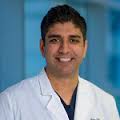05 Dec Teledermatology Can Triage Many Post-Operative Skin Surgery Concerns
MedicalResearch.com Interview with:
Rajiv Nijhawan MD
Department of Dermatology
The University of Texas Southwestern Medical Center
Dallas
MedicalResearch.com: What is the background for this study? What are the main findings?
Response: From a healthcare perspective, we are constantly working to improve access to patients, and telemedicine has proved to be an excellent platform for this goal especially in the field of dermatology. In regards to surgical dermatology, the role of telemedicine has been limited. The ubiquity of smartphones with photograph capability has provided an opportunity for patients to take self-acquired photographs (selfies) easily. Our experience has been that few patients who call with post-operative concerns have major issues (e.g. infection, bleeding, etc.) while the majority of concerns are minor in nature, and patients are often seeking reassurance.
Our study shows that the majority of concerns can easily be triaged and managed through patient-directed photography without burdening the patient to take time off work for another appointment, find transportation/travel (many of our patients travel hours for their visits), wait to see the provider, etc. This option of triaging a post-operative concern essentially immediately through the use of patient-directed photographs provides the opportunity for immediate feedback on the patient’s concerns and likely reduces anxiety while making the process as patient-centered as possible. In addition, it allows the physician to be as efficient as possible by not having to overbook his/her schedule to accommodate these often non-urgent concerns.
MedicalResearch.com: What should readers take away from your report?
Response: Most post-operative concerns can easily be triaged and managed through the use of patient-directed photography transmitted electronically to the dermatologist/dermatologic surgeon. This approach allows for the physician to almost immediately evaluate the concern without wasting anyone’s time. If the photograph indicates something more concerning, then the physician can also appropriately determine how quickly the patient should return for an in-office evaluation.
MedicalResearch.com: What recommendations do you have for future research as a result of this study?
Response: We believe that our findings will add another way that dermatologists/dermatologic surgeons can better provide access to their patients. Patient directed photography may also have a role for concerns after certain cosmetic/laser procedures as well.
MedicalResearch.com: Thank you for your contribution to the MedicalResearch.com community.
Citation:
Note: Content is Not intended as medical advice. Please consult your health care provider regarding your specific medical condition and questions.
More Medical Research Interviews on MedicalResearch.com
[wysija_form id=”5″]
Last Updated on December 5, 2016 by Marie Benz MD FAAD

